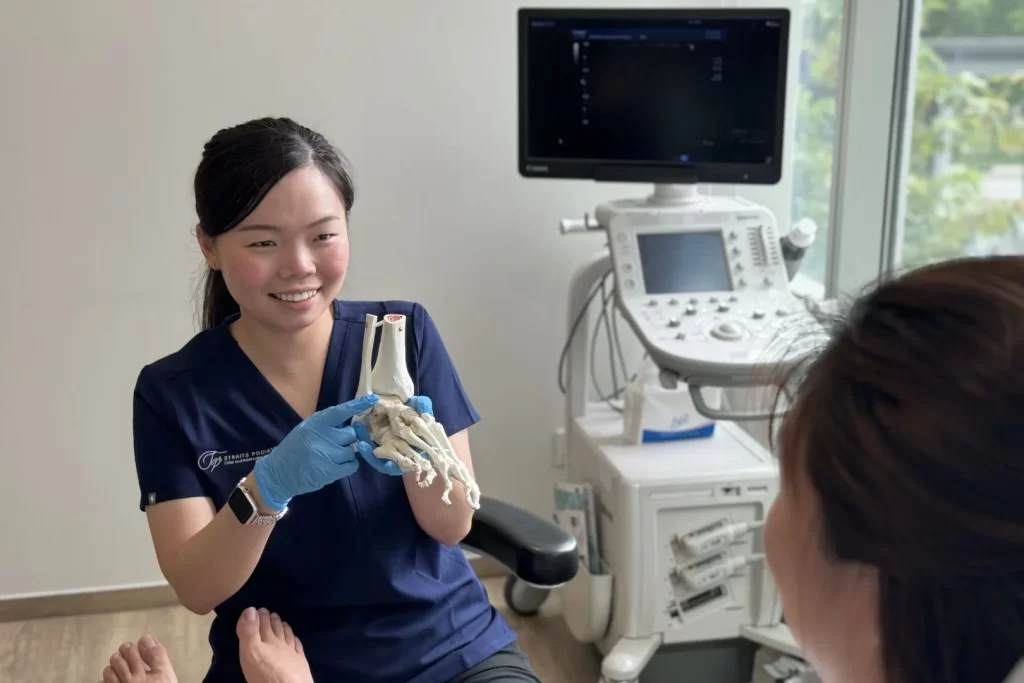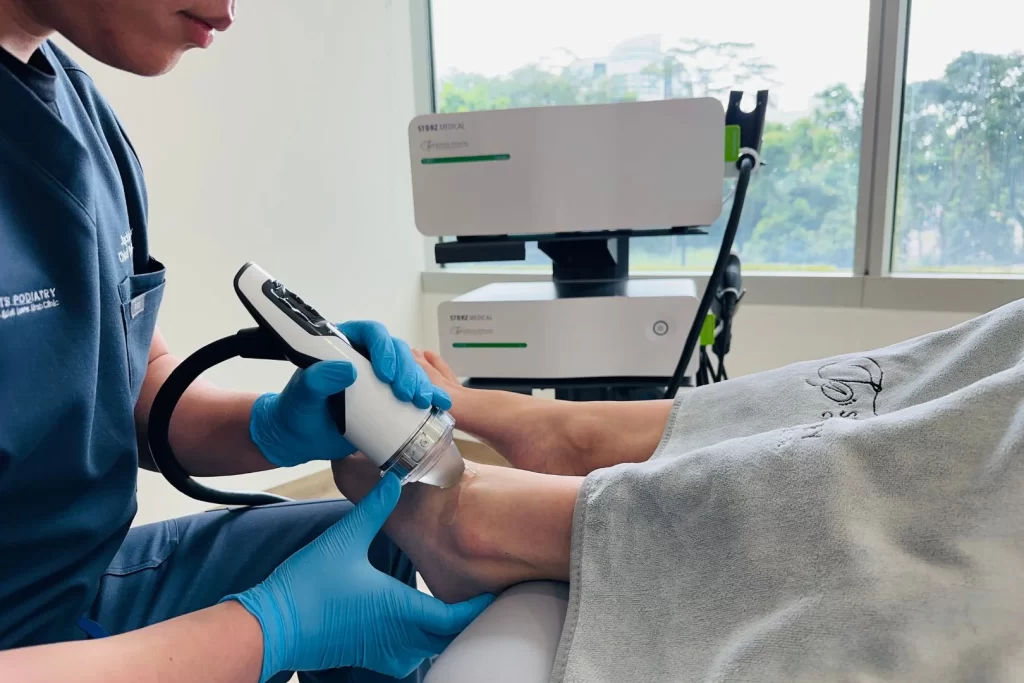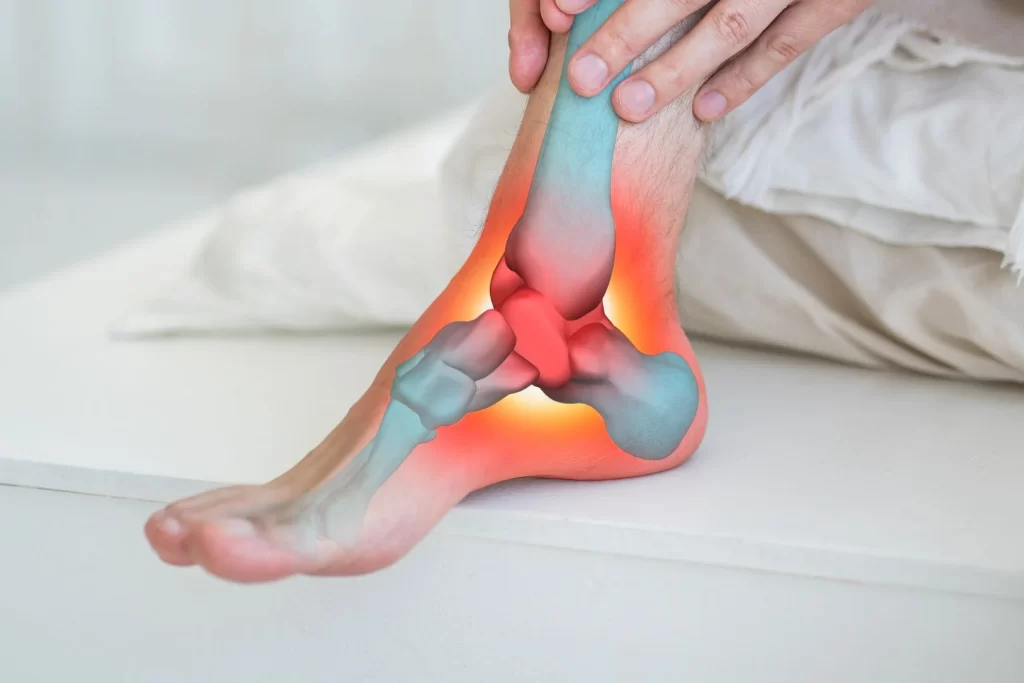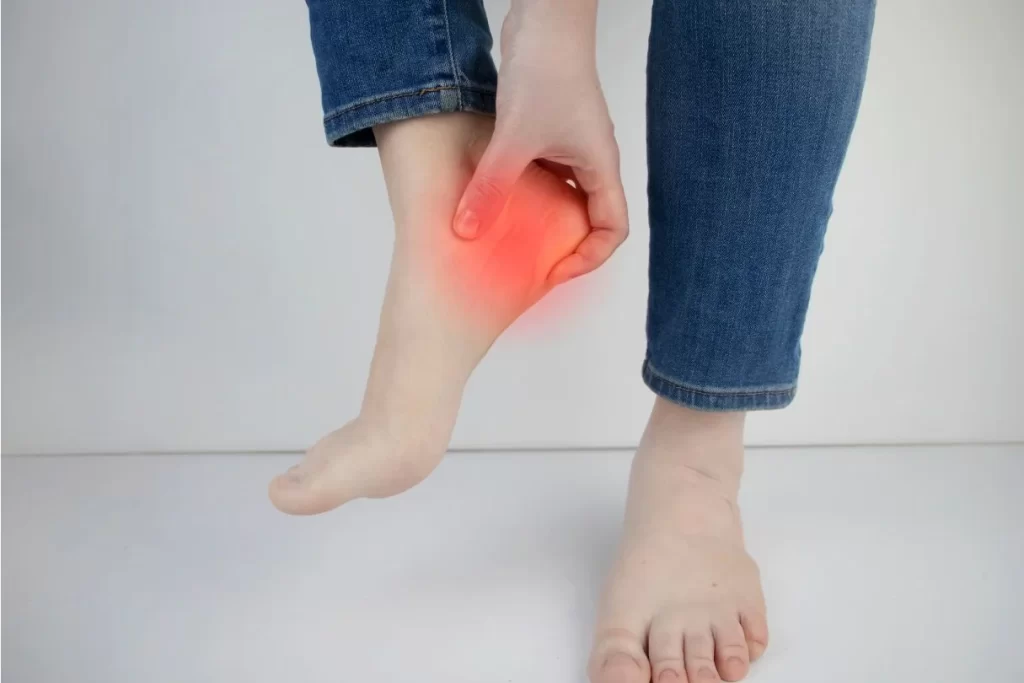Introduction
Ankle injuries are among the most common injuries that most individuals experience at least once in their lives. The ankle joint plays a crucial role in providing stability and mobility when we walk or run, with many tendons and ligaments supporting the joint. Hence, the ankle joint is vulnerable to strains, sprains, fractures, and other injuries. Understanding the causes, symptoms, and treatment options for ankle injuries is essential for prompt and effective management, enabling you to recover fully and resume your daily activities without limitations.
Common Causes of Ankle Joint Injuries:
- Ankle Sprains: Occurs when the ligaments supporting the ankle joint are stretched or torn from sudden twisting, rolling, or impact. This type of injury is most common in sports such as basketball or badminton.
- Talar Dome Injuries: Occurs when the cartilage within the ankle joint is damaged, often from a bad ankle sprain.
- Ankle Fractures: Involve a break or crack in one or more ankle joint bones. These injuries often occur as a result of direct trauma.
- Ankle Impingement: Ankle impingement occurs when soft tissues, such as ligaments or joint capsules, are pinched between the bones of the ankle joint. Symptoms may include pain, swelling, clicking or catching sensations within the ankle.
- High Ankle Sprains (Syndesmotic Sprains): A significant ankle sprain injury that damages the ligament connecting the tibia and fibula bones in the lower leg. These injuries often occur due to sports and landing from height.
Need Help? See Our Podiatrist Today
Common Causes of Ankle Tendon Injuries:
- Achilles Tendon Injuries: Injuries to the Achilles tendon, such as tendonitis or rupture, cause pain at the back of the ankle. These typically occur due to overuse, jumps and lunges, or degenerative changes.
- Posterior Tibial Tendonitis: An inflammation of the posterior tibial tendon that causes pain at the inside ankle. This is often due to sudden increase in activity or overuse, especially in individuals with flat feet.
- Peroneal Tendonitis: An inflammation of the peroneus longus or brevis tendon that causes pain at the outside ankle. This can arise from overuse or following an ankle sprain.
When to See an Ankle Specialist in Singapore?
While some ankle injuries may resolve with self-care measures, certain signs and symptoms warrant evaluation by an ankle specialist in Singapore:
- Severe pain, swelling, or bruising in the ankle.
- Inability to bear weight or walk on the affected foot.
- Persistent pain or instability despite rest and conservative treatments.
- Visible deformity, misalignment, or inability to move the ankle joint.
- Recurrent ankle sprains or previous ankle injuries.
- Symptoms of Achilles tendon rupture, such as a sudden sharp pain in the back of the ankle and difficulty walking or pointing the toes downward.
If you experience any of these symptoms or have concerns about your ankle health, don’t hesitate to schedule a consultation with an ankle specialist for evaluation and personalized treatment recommendations. Early intervention can help prevent complications, promote healing, and restore optimal function and mobility to your ankle joint.

Ankle Injury Treatment Options in Singapore
The key to managing ankle injuries is to seek the right treatment early to reduce any risk of further damage. Treatment options for managing ankle injury include:
RICE
Rest, Ice, Compression, and Elevation (RICE) are often the initial steps in managing ankle injuries to reduce pain, swelling, and inflammation. Resting the injured ankle, applying ice packs, compressing the area with a bandage, and elevating the foot above heart level can help promote healing and alleviate symptoms.
Pain Relievers
Over-the-counter anti-inflammatory medications may help to alleviate pain and reduce inflammation resulting from ankle injuries. They can be taken orally or applied topically for short-term relief. We strongly recommend you seek a medical professional before taking such medications.
Immobilisation
Severe ankle sprains and fractures typically require a period of immobilisation. A splint, brace, or even a fibreglass cast may be put on for 4 to 8 weeks to stop the ankle from moving. Immobilisation allows the healing of injured tissue and prevents further stress and impact on the ankle.
Orthoses
Custom-made insoles or ankle-foot orthoses are medical devices that stabilise the ankle joint and reduce stress on the injury. They can play an important role in the recovery and preventing recurrence of the injury. Depending on the severity, this may be a long-term solution
Shockwave Therapy
Extracorporeal shockwave therapy uses high-pressure acoustic sound waves to stimulate an increase in blood flow and the release of growth factors. This allows the body’s natural healing process to take place. Shockwave therapies are used for tendon and joint injuries and typically require between 3 to 6 sessions.
Surgical Intervention

How to Prevent Ankle Injuries?
There are steps you can take to reduce the risk of ankle injuries and promote long-term joint health and function. Consider adopting these preventive measures:
- Always do a proper warm up routine before engaging in any physical activity. Warm-Up and Stretch
- Select the right footwear for the right activity (e.g. basketball shoes for basketball practice)
- Invest time in muscle-strengthening exercises and balance training.
- Improve your form and technique when carrying out physical activities.
- Use supportive gears or tapes to provide additional stability during high-impact activities.
- Complete your physical activity by doing a thorough stretch and cool-down routine to maintain muscle flexibility and reduce fatigue.
If you experience an ankle injury or have concerns about ankle health, consult a healthcare professional for evaluation and personalised treatment recommendations. Early intervention and proper management are key to minimising pain, restoring function, and preventing recurrent injuries.
Share this with someone you know
Frequently Asked Questions
How can I tell if I have a sprained ankle or a fracture?
While both sprained ankles and ankle fractures can cause similar symptoms, there are key differences in their presentation. An ankle sprain typically results in pain, swelling, difficulty walking, and even bruising around the ankle. A fracture often causes inability to bear weight, therefore you can hardly stand or walk. Imaging tests, such as X-rays or MRI scans, may be necessary to differentiate between the two conditions.
What should I do immediately after injuring my ankle?
Following an ankle injury, it’s essential to follow the RICE protocol: Rest, Ice, Compression, and Elevation. Rest the injured ankle, apply ice packs to reduce swelling and pain, compress the area with a bandage, and elevate the foot above heart level to minimize swelling. Avoid putting weight on the injured ankle and seek medical attention if symptoms worsen or fail to improve.
When should I consider surgery for an ankle injury?
The recovery time for an ankle injury depends on the following factors:
- Type of ankle injury (e.g. sprain, tendonitis)
- Severity of the injury
- Overall health and healing capacity of the individual
- Adherence to the treatment plan (e.g. Wearing the orthoses, carrying out rehabilitative exercises)
Mild ankle sprains generally heal within a week or two. However, severe ligament tears or fractures may take up to several months to recover. In any case, rehabilitation is vital in restoring strength, flexibility and function to the ankle.
How to get rid of arch pain?
Surgery for an ankle injury is typically considered in cases of severe ligament tears, unstable fractures, or failure to respond to conservative treatments. However, your recovery goal plays an important factor too. For example, surgery may be less essential for a person with a sedentary lifestyle than for an athlete. Therefore, your healthcare professional should evaluate the extent of the injury, functional limitations, your overall health, and your goal to determine if surgery is necessary. Surgical interventions may involve repairing damaged ligaments, realigning fractured bones, or stabilizing the ankle joint with hardware, such as screws or plates.
Can ankle injuries increase the risk of developing arthritis in the ankle joint?
Search
You May Also Like
Do You Have A Question? Ask Us...
Search
Do You Have A Question? Ask Us...
You May Also like
Categories
Categories
- Ankle (4)
- Diabetic Foot (7)
- Feet (5)
- Knee (5)
- Paediatric Lower (5)
- Soft Tissue (3)
- Uncategorized (60)




